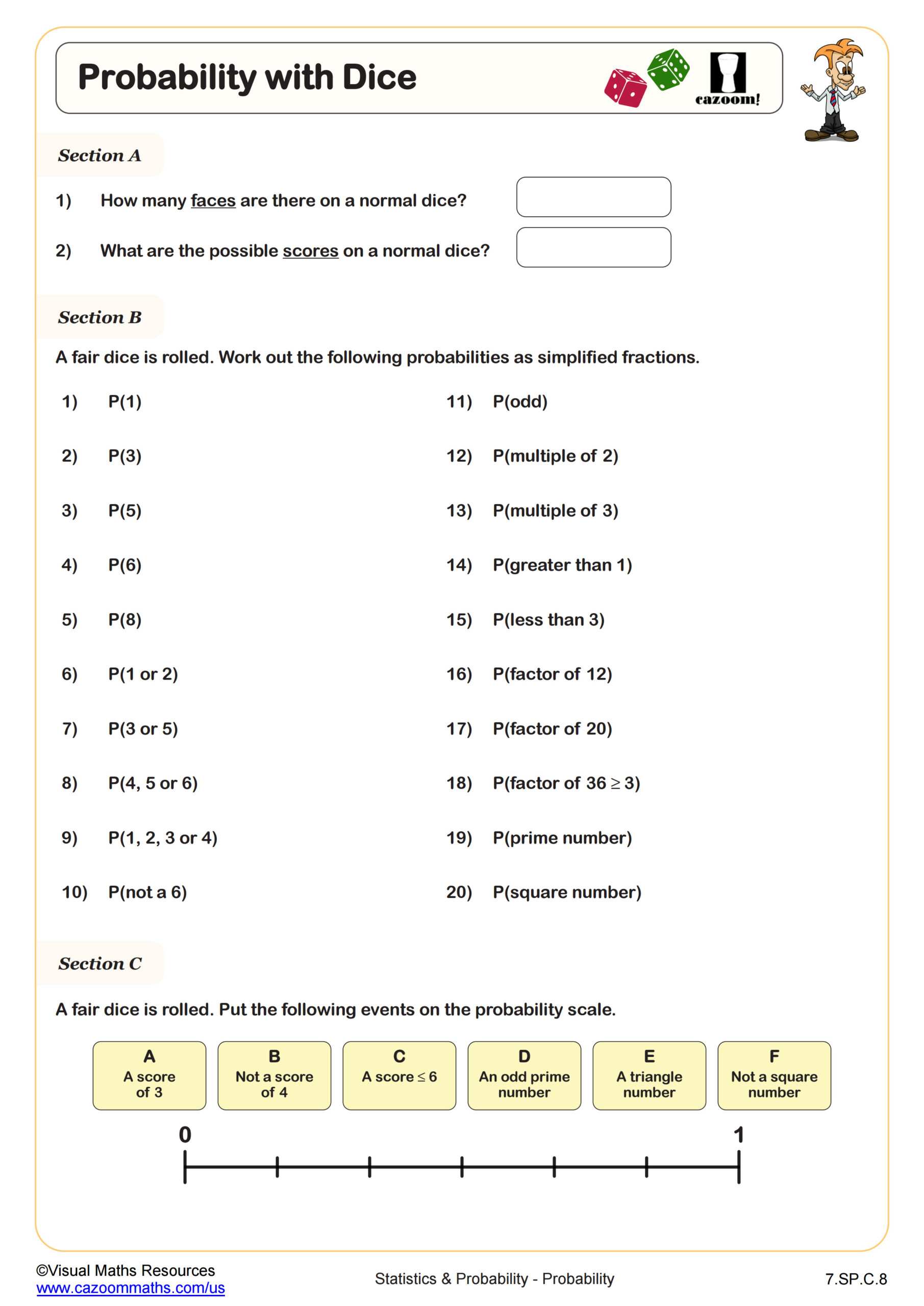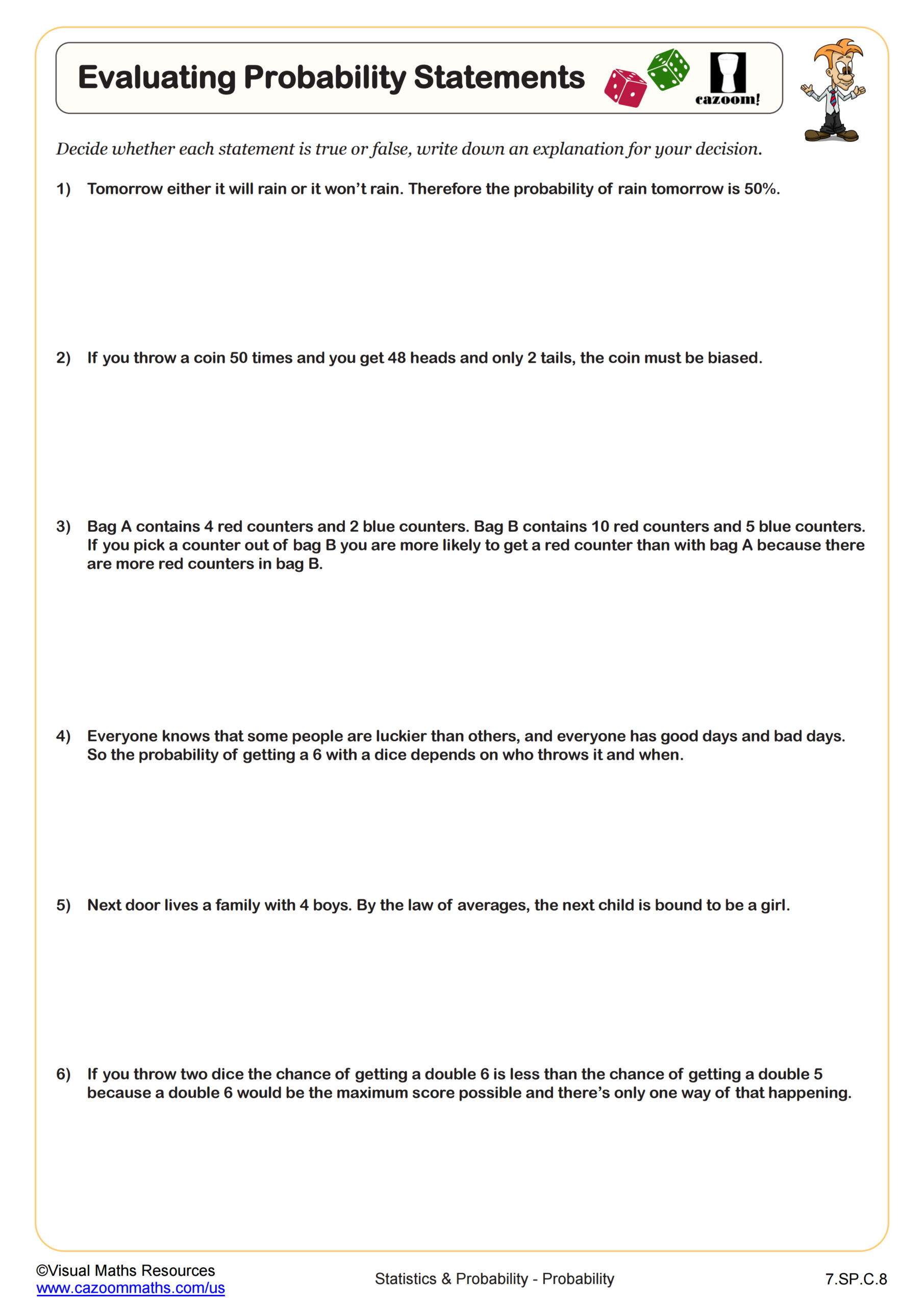Loading...
Back to:
Calculating Probability WORKSHEET
Suitable for Grades: 7th Grade
CCSS: 7.SP.C.7
CCSS Description: Develop a probability model and use it to find probabilities of events. Compare probabilities from a model to observed frequencies; if the agreement is not good, explain possible sources of the discrepancy. a. Develop a uniform probability model by assigning equal probability to all outcomes, and use the model to determine probabilities of events. For example, if a student is selected at random from a class, find the probability that Jane will be selected and the probability that a girl will be selected. b. Develop a probability model (which may not be uniform) by observing frequencies in data generated from a chance process. For example, find the approximate probability that a spinning penny will land heads up or that a tossed paper cup will land open-end down. Do the outcomes for the spinning penny appear to be equally likely based on the observed frequencies?
Calculating Probability WORKSHEET DESCRIPTION
Here students are given nine different scenarios/events such as “You will spin a 10 or less than 10 on a fair spinner with 10 sections numbered 1 - 10” alongside a six interval scale with “impossible” at one end and “certain” at the other. Learners must place an arrow on the scale next to each event to show the chance of the event happening. Learners are also asked to write this probability as a fraction. All probabilities can be shown on an interval marker on the scales, although some fractions, such as 4/8, will need to be simplified before doing so.



